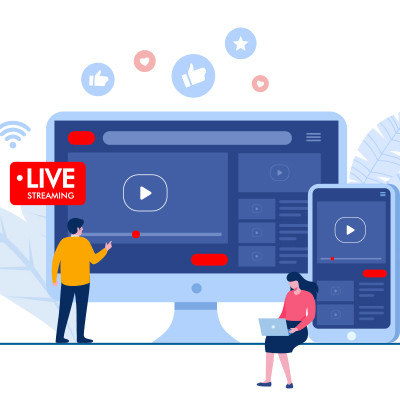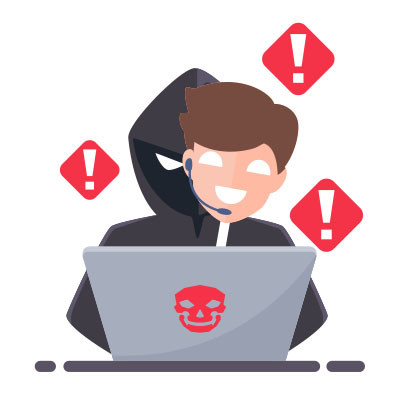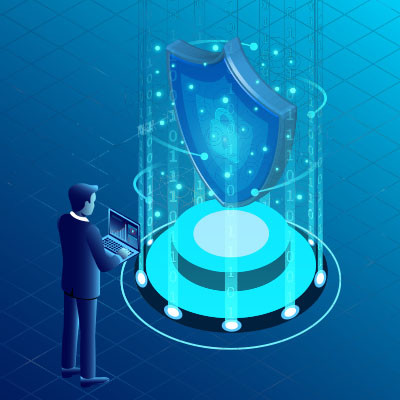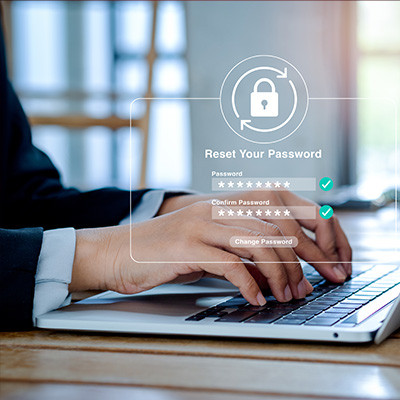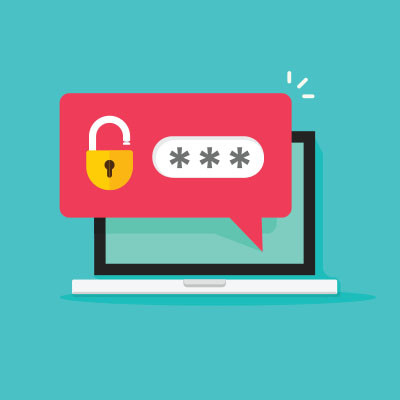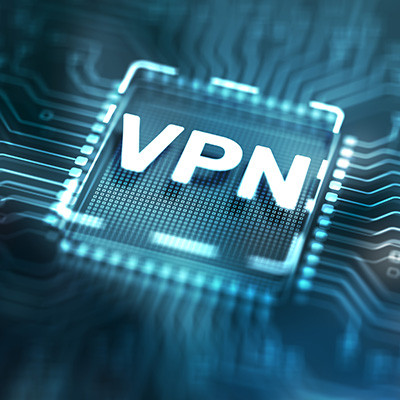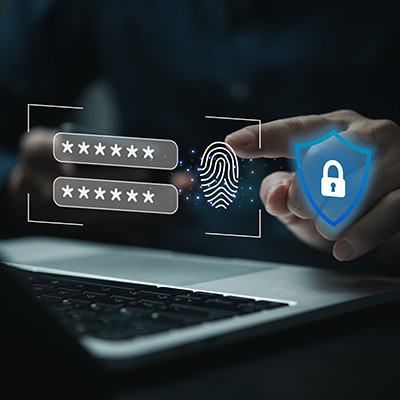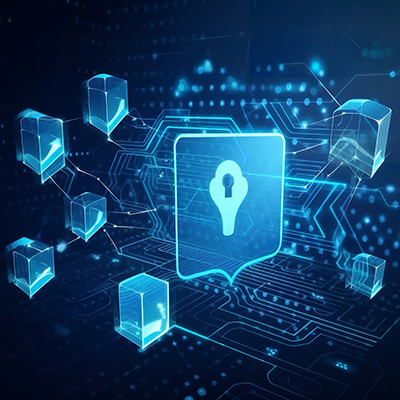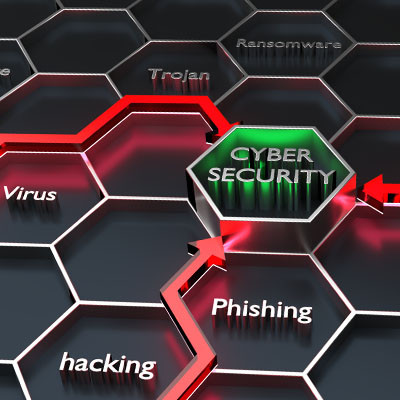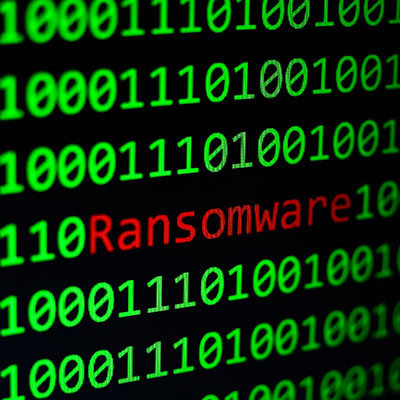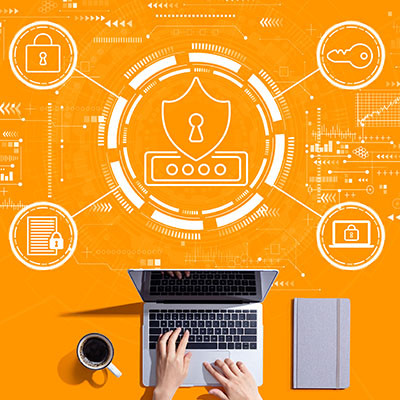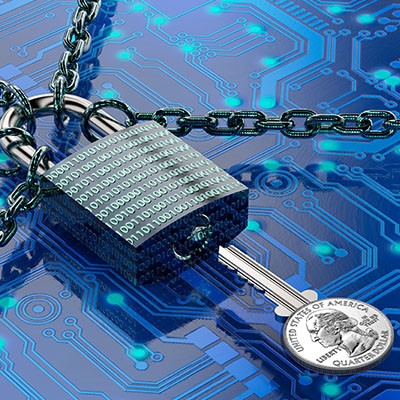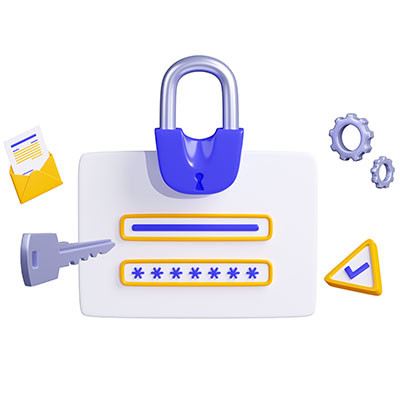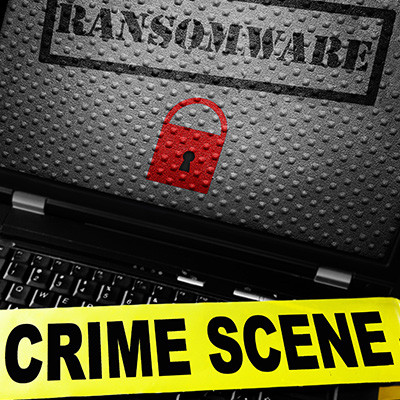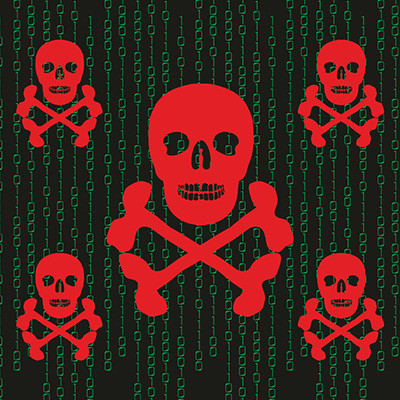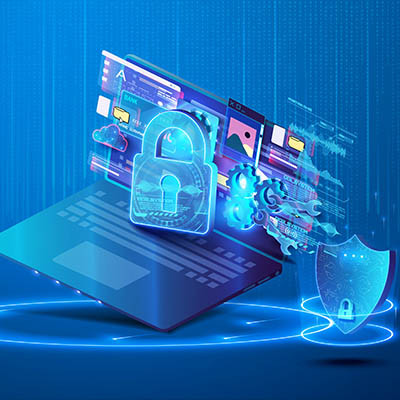k_Street Consulting, LLC Blog
To keep your business running smoothly, even if something goes wrong—like a power outage, cyberattack, or other disaster—you need a reliable way to protect your data. That’s where data backup comes in. It’s important to make sure your backup is thorough and trustworthy so you can recover if things go south.
Imagine giving every single person you work with a key to your house. Would you do it? Probably not, right? What if someone lost their key or had it stolen? You wouldn’t want to take that risk.
So, it stands to reason that if you can’t trust the people you work with every day with a key to your house, you wouldn’t want them to have access to all of your data; or your business’.
Every business relies on technology to function. Some wouldn’t be able to deliver any value to their customers without it, while others would be severely hindered if they suffered a data breach. For this reason, cybersecurity has to be a priority. In today’s blog, we will discuss five issues that business owners run into that can muddle their cybersecurity efforts.
Businesses of every size need to prioritize their security. This fact has not changed and will not change anytime soon. What has changed, however, are the recommended ways to approach this security.
Today, we wanted to review the history of today’s predominant cybersecurity advice and explore how the zero-trust security model applies.
Operating systems are the backbone of any computer or device. Whether it’s your phone, a tablet, or a computer, the operating system controls how the device works, allowing you to run apps, browse the web, and complete tasks. For businesses, having up-to-date operating systems is especially important. Let's look at why this is critical and what can happen if businesses don’t keep up!
Think about how many online accounts you have. With so many accounts, it’s important to make sure they’re secure. Creating strong passwords is one of the best ways to protect your accounts from hackers. Here’s how you can create passwords that are hard to crack and keep all your online accounts safe.
Can you tell the difference between your colleagues and a scammer with access to their email account? This is essentially what a business email compromise attack involves—a scammer initiates a phishing scheme using an internal mode of communication. These scams are also observed in schools, making them dangerous in the education sector.
Would you feel safe staying at a hotel that, instead of unique locks, each door used the same key as all of the others? Probably not—because if someone got in, they could take whatever they wanted. That’s similar to how old-school cybersecurity worked. Once someone got into a company’s network, they could access almost everything, making it easy for hackers to steal information. But today, many businesses use a better security framework called zero-trust security. In today’s blog, we discuss what zero-trust security is and why it’s safer.
If there’s one thing that helps businesses establish consistent policies and strategy, it’s a good framework. You can use a framework for anything, including network security. Today, we want to walk you through the cybersecurity protection standards as they are outlined by the National Institute of Standards and Technology so you can better protect your business.
Cybersecurity has to be a big deal for any business that uses IT, and today, who doesn’t? When your employees don’t follow cybersecurity rules, it can put your business in danger, like getting hacked or losing money. The first step is to figure out why employees aren’t following the rules. This could happen because they don’t know the rules, haven’t been trained enough, or think the rules are too hard or take too much time.
Cloud computing as a whole has been one of the most transformative technologies for businesses. With so many companies (upward of 90 percent of modern businesses) using some type of cloud computing, more companies than ever are really leaning into the technology and use it for mission critical business processes. Let’s take a look at some of the ways businesses can secure their cloud resources.
Over the past few years, huge scamming operations have operated in Southeast Asia, and now they are spreading. These scams—known as pig butchering scams—cause serious harm, as in an estimated $75 billion worldwide in 2023.
With these sorts of operations spreading, let’s go over what pig butchering is.
Small businesses today are in a prime position to thrive, thanks to a surge in innovative technologies that are affordable and work to boost efficiency. In the past, access to cutting-edge technology was often reserved for large corporations, but today small businesses can now gain quick access to these technologies and can have a real positive effect on the way they go about doing business. Let’s take a look at some of the best technologies small businesses can use to try and compete with the big boys.
Technology is central to most businesses, which means that security is, by proxy, central to them as well. With cyberattacks on the rise, it’s more important than ever for you and your employees to be on the same page regarding cybersecurity. Today, we are looking at four ways you can ensure sound cybersecurity practices that even the most belligerent employees can follow… with the right support in place.
Protecting your business’ accounts is something we will advocate for on repeat. You’ll hear us tell you about complex and unique passwords and multi-factor authentication until you’re sick of hearing it. But one tool that our clients sometimes forget is the password manager—an equally useful tool that can help your business keep passwords safe and secure.
Organizational cybersecurity is more important than ever, with an increasing number of threats requiring constant vigilance. To stay ahead of these dangers, cybersecurity experts and network administrators are continuously developing new solutions. This month, we’ll highlight three key innovations that are helping businesses navigate the evolving cybersecurity landscape.
Network security is a major issue for any business that relies on password-protected systems—and who doesn’t? With so much at stake, it’s important that every user uses passwords that are not only complex and secure but also easy to remember. This month, we will discuss how the passphrase is the answer to keeping your password-protected accounts secure.
Today’s business needs to be able to share files and data securely and efficiently. This process may seem straightforward, but there are a lot of options that the business owner or manager needs to understand. In today’s blog, we look at some steps that will help you create a strong and secure file-sharing system.
You should always use strong passwords for each and every account. Cybercriminals don’t need to put much effort into cracking a password these days—it only takes a little software and standard computer hardware to crack millions of passwords in just a second or two.
The more complex and random a password is, the more secure it is.
But coming up with (and memorizing) complex passwords is really difficult. This trick should make it a whole lot easier.
Potential data breaches are increasingly problematic for organizations, and the most common way that data is stolen is through phishing attacks. Phishing attacks are currently one of the most pervasive threats on the Internet, and you need to understand them to thwart their effectiveness against your users. Let’s explore what exactly a phishing attack consists of and some best practices you can use to defend your network against them.
Facebook remains one of the most visited places on the Internet. Meta (the parent company to Facebook) also features WhatsApp and Instagram on their roster and has faced numerous security and privacy failings over the years. In this week’s blog, we’ll take a brief look at some of the most noteworthy.
A popular automotive dealership software platform has recently become the target of a cyberattack, resulting in the solution going down for several days. Any business that has a solution it relies on can sympathize with the situation. After all, if you lose access to your critical business apps for several days, would your operations be able to recover?
All businesses use email to communicate, but too many organizations haven’t jumped on the encrypted email bandwagon yet. Encryption is incredibly helpful to keep networks and infrastructure secure, and it can do the same for your email solution. In fact, it is likely required to ensure the secure transfer of critical and sensitive information.
Encryption is a powerful weapon against hackers that can prevent them from stealing your data and leveraging it against you. Encryption, in its most basic textbook definition, converts your readable data into an indecipherable jumble that can only be reassembled through the use of an encryption key. Small businesses absolutely must utilize encryption to protect customer information, financial records, and other important or sensitive business data. This ensures that it is as protected as possible against those that might do you harm.
Cyberthreats are increasingly sophisticated, and businesses have to do what they can to address these issues. Since cyberattacks can have a massively negative impact on your business, it stands to reason that you need a platform in place to enhance your employees’ awareness of Internet-based threats. This month we look at the top three IT security concerns businesses face and what should be done to confront them.
Hackers are always on the lookout for personally identifiable information, or PII, as it’s an immensely lucrative resource. You’ll need to protect it if you want your business to continue operating safely and efficiently. Let’s go over what PII entails and what kinds of data you might find under this term.
Safeguarding your online accounts is an important part of maintaining network security. With the increasing number of cyber threats, relying on strong, unique passwords is no longer optional—it's a necessity. Remembering complex passwords for numerous accounts can be challenging, however. This is where password managers come in handy, offering a secure and convenient solution to managing your credentials.
Microsoft's cybersecurity vulnerabilities have been making headlines recently. These lapses in security are causing concern for customers worldwide. The impact of these vulnerabilities is far-reaching. It affects network security and increases the risk of data breaches, causing somewhat of a ripple effect.
Phishing is a pervasive threat nowadays, with businesses of any size or industry serving as prime targets. Understanding phishing and implementing effective prevention strategies is crucial for your entire team.
Let's explore how to reduce the effectiveness of phishing schemes against your business—in other words, how to prevent phishing from having an impact.
While the word “audit” can easily be a scary thought for businesses, there are certain cases where an audit serves an organization’s direct benefit. Take, for instance, the ones that occur internally to identify and correct security issues and vulnerabilities. These audits are not only a positive endeavor for businesses; they’re extremely important to carry out.
Let’s talk about why this is and review a few standard practices you should prioritize as you go about this process.
Like many of the past few years, this year has witnessed a significant surge in high-profile ransomware attacks. If you haven't already strategized how to safeguard your business from these threats, now is the time to act. Fortunately, you can take several proactive measures to mitigate the impact of ransomware attacks, and it all starts with preparation.
When it comes to running a successful business, customer confidence is everything. It can make or break your business’ reputation. If you’re too reckless with your customers, why would anyone else be willing to sign on with you? Thankfully, there are plenty of ways you can build customer confidence, and technology plays a pivotal role in many of them. Today, we want to explore how you can build customer confidence through the use of business technology solutions.
Software plays a major role in business, regardless of what type of business you run. Whether you use a CRM, a point-of-sale system, or your software profile is a little more complicated, you need to understand a few things about modern software in order to get the most out of it. Let’s take a look at three things you need to know about modern software.
One of the best things about the move towards streaming in media is that since people love watching real-life stories, studios have committed to creating documentary content that provides interesting perspectives. Many people don’t have a comprehensive understanding of technology, especially as it relates to real-world situations, so dramatized documentaries can be a good source of information. Today, we’re going to go through three riveting technology documentaries that are available on streaming services.
Believe it or not, if you were to rank your business’ greatest threats, risk factors, and vulnerabilities, your users would most likely belong somewhere toward the top. Human error is a big challenge to your security simply because cybercriminals understand that your employees are, in fact, human and will, in fact, make mistakes.
Let’s explore how cyberattacks exploit this tendency and how you can better protect your business from the ramifications.
Cybersecurity is crucial for everyone to focus on, both in the professional environment and in their personal lives. That’s why I wanted to put together a list of cybersecurity practices you should encourage your team to follow when they aren’t in the office or working remotely, when their time is theirs.
All it takes is one oversight to potentially undo any benefits your cybersecurity protections and other best practices may deliver. For instance, even if you have things like multifactor authentication in place, a phishing scam or even some malware varieties could potentially give an attacker access to your email… and all the data your messages contain, just sitting in your inbox.
Picture this scenario: while going about your daily routine, an email lands in your inbox, purportedly from a cybersecurity company. The alarming claim is that you've become the target of a hacking attack. Despite lacking IT expertise and being unfamiliar with your security agency's protocols, you trust the message and promptly respond. Little do you know, the email is a cleverly disguised cyberthreat, and you find yourself ensnared in their trap.
Your business' IT security effectiveness relies heavily on how well your technology works. With this in mind, educating your staff on their responsibility to safeguard your business’ digital assets is important. Let’s explore the key priorities businesses need to consider to establish a robust security training platform that works to protect those assets.
Nowadays, it is crucial that you make security a top priority. With the right approach, it not only saves you massive headaches, but also a considerable amount of capital—particularly if you leverage the appropriate solutions for SMBs. As a managed service provider, we can ensure that you implement the appropriate IT solutions to maximize the return on your security investment.
The password is the number one data protection strategy used in computing. It’s strange, however, how many times a weak password is the cause of data breaches and other situations that can hurt a business. In today’s blog, we go through some of the best password creation tips that will allow you to better secure your individual and business data.
Small and medium-sized businesses largely rely on their standing amongst their audience, which means their reputations are critically important to preserve. Unsurprisingly, one of the fastest ways to damage—if not eliminate—their reputation amongst the public is to suffer a cybersecurity event. Let’s examine some statistics, and consider what you need to do to keep your business from becoming one.
Technology and digital tools are a hot topic on our blog, but where there is technology, there is also data… and where there is data, there will be hackers trying to steal it. Data breaches are a common thread in all industries, and to prove this, we have put together six of the most notable data breaches from 2023. We hope you can learn a thing or two from them!
In this blog, we continuously try to caution individuals against clicking on suspicious links, but distinguishing between a genuine URL and a questionable one has become increasingly challenging. Malicious tactics have evolved, making it imperative for everyone to remain vigilant. These threats are pervasive, coming from various directions. This discussion will focus on a single punctuation mark that can help determine whether a link is genuinely safe or potentially perilous.
Digital access relies on passwords as keys, but they are often neglected and left unprotected by users. Unfortunately, not everyone takes the necessary precautions to safeguard their passwords, and the prevalence of online scams surpasses that of physical pickpocketing.
Effective password management is imperative for businesses to uphold the security of online accounts and sensitive data. Here are five strategies to optimize password management:
Securing accounts is part of a comprehensive security strategy, and it all begins with practicing proper password hygiene. Are you using strong, complex passwords that are going to keep your accounts safe? While we always recommend using multiple measures to protect accounts, starting with your passwords can be a good way to build up to this. Let’s go over how to use better passwords for all of your online accounts and business needs.
Ensuring the security of your data is extremely important. If you are a frequent reader of this blog, you know that any unauthorized access to sensitive information can result in severe consequences for your business. The problem is that today’s cybercriminal tactics have become increasingly sophisticated, posing a constant challenge to organizational data security. Today, we look at six things you can do to keep your data secure.
Planning anything is always a grind, and trying to plan the best strategy when you have only a partial understanding of the subject can lead to a lot of waste. Business technology is one of those subjects. Not only do you need to identify what tech will be cost-effective, you need to get a pretty rapid return on the investment you plan to make. That’s why getting a professional perspective is so important in cases like this.
Every organization needs to have a certain level of cybersecurity protection in place. That includes firewalls, antivirus, VPNs, encryption, and centrally managed security policies. Even so, many modern cybercriminals know that businesses have these protections in place, and they are working out ways around them.
Security is a hot topic among businesses, especially where technology and data are concerned. If you want to ensure that you are doing all you can to protect the important assets and customer data on your infrastructure, you’ll want to work with a managed service provider who can offer all the services you need to make security a top priority. Here are just a few of them.
The State of Maine in the United States has been the victim of a cyberattack.
That’s right, the whole state was hacked by a Russian hacking collective.
The state claims that over 1.3 million people’s personal information was compromised via an already known vulnerability in secure transfer service MOVEit Transfer. Unfortunately for the people of Maine, this vulnerability is known to be used by the Cl0p ransomware gang, based out of Russia.
Nowadays, data security, especially on files that are attractive to hackers, has to be a priority. Many businesses have deployed a Virtual Private Network (VPN) to help them improve their data security. If you haven’t, understanding the myriad of benefits that businesses get from deploying a VPN will put in perspective just how useful the VPN can be.
Phishing attacks present a significant problem for the sustained stability of organizations. That is because they are a pervasive threat and come in several different forms. This month, we will outline some of the ways that phishing can affect an organization and a couple of things that you can do to keep them from being a problem.
You might think that adding additional security measures can only benefit your business, and this is true in most circumstances, save one: security exhaustion. If you don’t make it easy for your employees to adhere to your security policies, then you could inadvertently be making them perform slower than usual and your solutions could be getting in the way of their work.
Back in July, the White House secured commitments from Amazon, Anthropic, Google, Inflection, Meta, Microsoft, and OpenAI to help manage the risks that artificial intelligence potentially poses. More recently, eight more companies—Adobe, Cohere, IBM, Nvidia, Palantir, Salesforce, Scale AI, and Stability—also pledged to maintain “the development of safe, secure, and trustworthy AI,” as a White House brief reported.
Let’s talk a little bit about deepfakes. If you aren’t aware of this technology, deepfakes are essentially synthetic media. Typically they come in the form of videos or images that use artificial intelligence (AI) to replace a person’s likeness with another’s. With deepfake technology, people can convince an audience that a person said something they didn’t say. This deliberate digital subterfuge can bring with it a whole lot of problems. This week we will outline a few of them.
It’s an unfortunate fact that cybercriminals are motivated to attack places that contain large volumes of sensitive data, but typically lack the budget or in-house skills to sufficiently protect it. It’s even more unfortunate that this description directly applies to many schools and school systems.
Let’s talk about what schools have to offer cybercriminals, and what they need to do as a result.
It’s borderline impossible to conduct any business online without seeing potential threats abound. It also doesn’t help that threats tend to disguise themselves to avoid being detected. Today, we want to share a social media threat that one of our employees discovered while going about their day, and we think even a cautious user could have been fooled by it.
The cloud is an amazing tool for just about any business, allowing for countless benefits that span endless possibilities. However, because it involves the Internet and hosting data in an online environment, there are security challenges that naturally come about as a result of utilizing it. Let’s consider some of the security mistakes that businesses can experience while using the cloud.
In today’s interconnected world, an organization dedicated to fraud protection like the United States Federal Trade Commission is vital, especially when you consider how advanced digital technology has become and continues to grow. The FTC works to ensure consumer data stays protected by the businesses to which they entrust it. Let’s look at the Safeguards Rule and what your business should know about it.
For today’s business, there are very few threats that are as pervasive as cyberthreats. For this reason organizations that are willing to invest in their cybersecurity seem to have more control over their data and operations. With cyberthreats constantly evolving and becoming more sophisticated, it is crucial to equip ourselves with the right tools to protect our digital assets. In this week’s blog post, we will explore some of the most important cybersecurity tools that every individual and organization should consider implementing.
Viruses and malware are bad. Ransomware is crippling. Data breaches in some cases can more or less shut down a business. We talk about these threats all the time, but for most people, they are just scary-sounding buzzwords. Today, we want to talk about the more personalized threats that are much more cunning, and in some ways, much more dangerous.
Does your business rely on the strength of its information systems? If so, you understand just how important cybersecurity is to the health of your organization. In a near-constant attempt to maintain organizational cybersecurity, many organizations have started changing the way that they approach data and network security, by moving their security efforts to the edge of their network. This is called edge security, and there are some very intriguing benefits.
If you have never imagined your business in the crosshairs of enemy hackers, you could be in for a rude awakening. Unauthorized access to important business data could be enough to bring your business’ operations grinding to a halt, among other consequences. You need to focus your efforts on security, including protecting your infrastructure and ensuring its redundancy through data backup systems.
Have you ever considered the importance of client-side encryption for your Gmail and your Calendar? If you implement it, you can create meetings and send or receive emails that have been encrypted before they are sent to Google’s servers. Organizations using Google Workspace Enterprise Plus, Education Standard, and Education Plus can expect this client-side encryption tool, but personal users will be left in the dust.
Phishing is the most widespread attack vector for modern day hackers. They are continuously evolving, getting more and more sophisticated, and therefore more dangerous. In this month’s newsletter, we are going to go through what makes a phishing attack and how to give your organization the best chance at keeping them from being a major problem for your business.
Many web browsers, like Google Chrome, have features that allow for convenient password-keeping, but at the cost of considerable cybersecurity risks. We recommend that all businesses utilize a password management tool, but preferably not one that is built into a web browser. Why? We’re glad you asked!
Ransomware takes up a significant amount of our blog, and for good reason. It’s an incredibly scary threat to find yourself on the receiving end of, and modern businesses are, to be quite frank, often unprepared to handle it. We wanted to take today as an opportunity to discuss the negative effects you can expect from a ransomware attack—effects that will make you think twice about the current level of security on your infrastructure.
We focus a lot of time and effort on securing our clients with our cutting-edge tools and industry best practices. Our adversaries, the hackers, on the other hand, have come to understand that the way they will be successful is to get their contrived messages in front of the least knowledgeable people in your organization. Let’s take a look at how hackers choose their targets to get a better understanding of what their strategy is.
Businesses tend to collect and capture consumer data in an effort to provide a better experience or find new customers. Many of these businesses will package this information together and sell it to marketing companies. Consumers often don’t know how to opt out of this kind of activity and, thus, wind up oversharing information. This week, we want to highlight these issues and address how you can keep your personal data from being collected without your consent.
As time goes on, businesses are doing more and more to protect their digital assets from theft and corruption. Whether that is deploying tools, providing training, or getting the support you need to successfully secure your business from the myriad of threats coming your way, you need to be deliberate about the way you go about deploying your security resources. Today, we want to touch on security training and the role it plays in your cybersecurity.
Cybersecurity is quickly becoming one of the leading risks that businesses of all shapes and sizes face. Cyberattacks are expensive, they risk your continuity, and they could even get you in hot water when it comes to compliance regulations, local and state regulations, and virtually any entity you are associated with.
It might feel like this is an insurance company’s way to nickel and dime business owners, as premiums will continue to rise, especially for businesses that aren’t meeting certain requirements, but the truth is, with so much risk, the entire world needs to adjust for cybersecurity.
Phishing attacks are one of the most common security threats to your business, not only because they are effective, but because they can be utilized in many different ways. You can become the victim of a phishing attack through email, instant message, phone, or even your voicemail. These “phoicemail” attacks are quite crafty in their approach, and you should be wary of them.
When it comes to your business’ cybersecurity, passwords are a pretty critical part of the system. This means that making sure they are secure is just as critical…however, that is not to say that this is easy. We, however, wanted to make sure that creating sufficiently secure passwords for all of your accounts is a far simpler prospect by the time we’re finished here.
At the end of January, the Federal Bureau of Investigation went public with an announcement that they had taken down the servers and Dark Web sites utilized by the Hive ransomware gang. This is a major victory, in terms of fighting cybercrime, but a certain statistic from this operation shows a somewhat disconcerting trend.
Artificial intelligence and machine learning are entering the mainstream technology discourse, and with software developing the ability to learn from datasets, many businesses are using this technology to automate their processes to cut down on costs and better use their current resources. There is a lot of good that comes from this, but only when you look past these benefits can you start to see the drawbacks, including an important one called “data poisoning.”
Despite not wanting to think about cybersecurity incidents derailing your operations, it’s important nevertheless to consider them before it’s too late to do anything about them. These days, businesses need to invest considerable capital into protections, including a cyber insurance policy to cover all of their bases.
Let’s discuss some of your options for cybersecurity insurance and what you’ll need to know to make the most informed decisions possible.
For quite a while it took an actual disaster to encourage business leaders to allocate any time and money to put towards cybersecurity. Many businesses still don’t, in fact. Those that have, while absolutely prudent in their use of resources to help ward off security problems, may forget that there are still things that need to be done aside from employee training to keep their security up. Let’s go through a few things that every organization should be doing to maintain the security of their information systems.
Cybersecurity is one part of your business’ computing that you must prioritize, as the fallout of a data breach could, in many cases, be enough to shutter your business for good. You want to be seen as a company that takes data security seriously, and to this end, you have likely implemented countless security features and measures to protect your organization’s resources and data. However, this all comes at a cost, and it’s not the one you might expect: your employees.












































